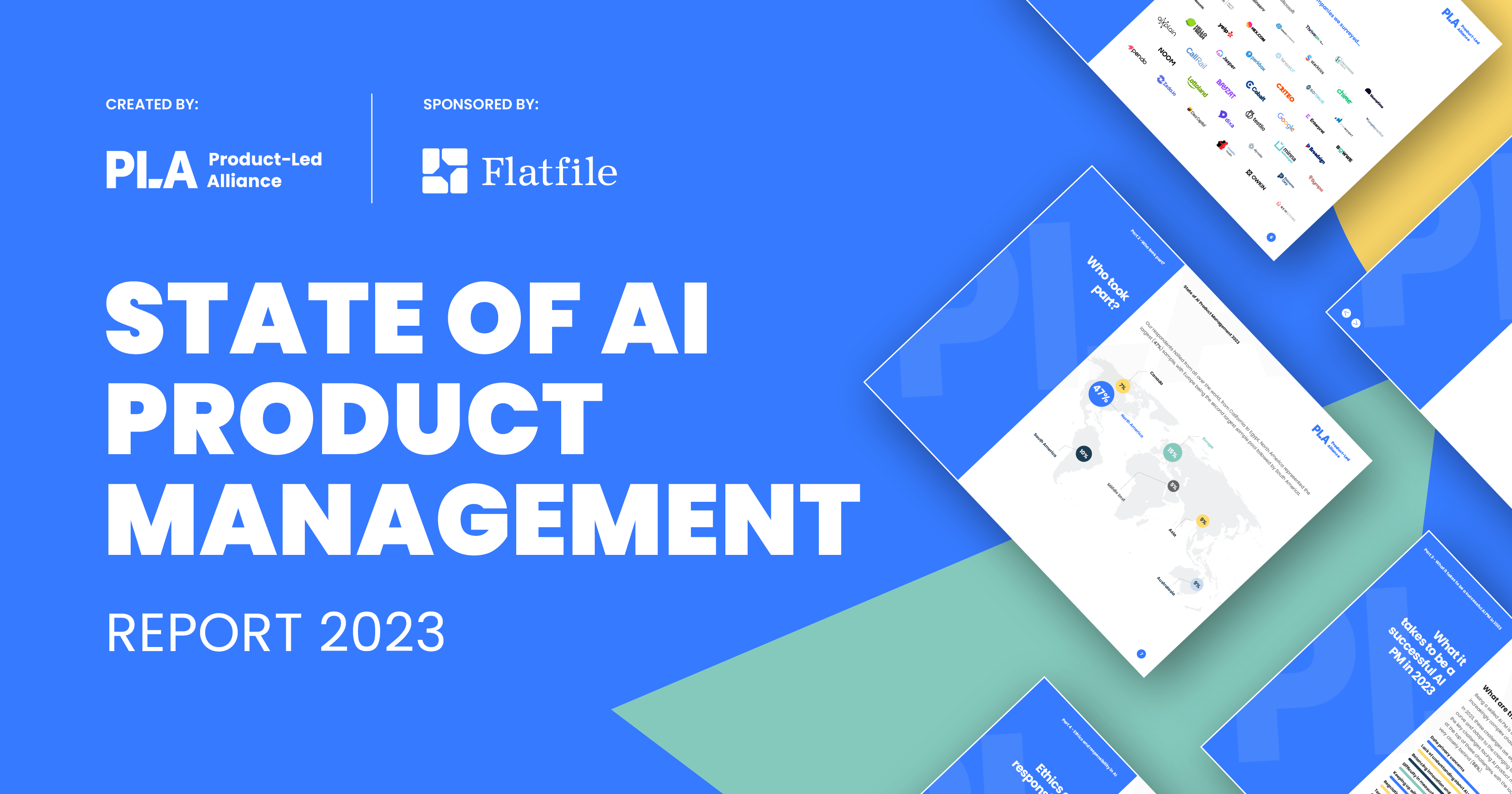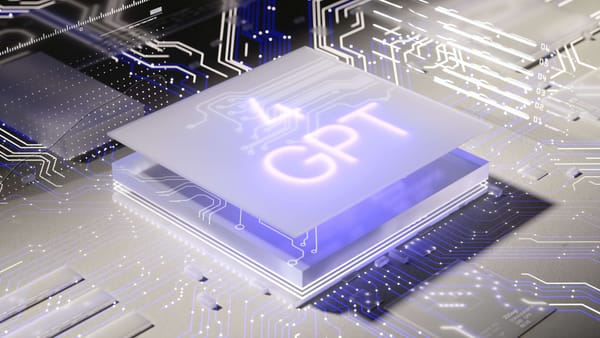ChatGPT is the new kid on the block. As open AI technology continues to entrench itself in our society, accessibility is at an all-time high. So how can you, as a product manager, use ChatGPT for your own business leads? Which prompts can you ask the AI, and how can you get the most out of it?
We asked ChatGPT those very things because who doesn’t love going meta? So, here’s what the bot had to say and our breakdown of it. We even provided examples of prompts at the bottom for those curious enough to try!
“AI technology like ChatGPT can have a significant impact on product-led businesses in several ways:
1. Improved customer engagement: AI-powered chatbots like ChatGPT can provide instant support to customers, addressing their queries and concerns quickly and efficiently. This can help businesses provide a better customer experience, leading to increased customer loyalty and retention.”
Chatbots use AI and natural language processing (NPL) to comprehend questions and generate answers. In short, human conversation is stimulated without the need for human intervention. The workforce is taken out of the equation here, and customers deal with a bot trained through data it has been fed for accuracy.
Using a chatbot can be a very effective tool. It frees up your employees to work on projects and ensuring customers always have help available to them, regardless of the time of day or where they’re located.
There are a few different types of chatbots, from scripted to rule-based, but ChatGPT uses AI-powered. Context is a key factor here, personalizing the customer experience based on their questions and history. Also, the more the bot is used, the more intelligent it becomes at responding. Hopefully, that doesn’t creep you out!
2. “Personalization: AI-powered algorithms can analyze customer data and behavior to provide personalized product recommendations and tailored marketing campaigns. This can help businesses increase sales and revenue by targeting customers with the right products at the right time.”
AI has the ability to speak to people differently based on their level of knowledge and behavior. ChatGPT decides which tone to use based on several things: what kinds of questions customers ask, how they interact with the algorithm, and browsing and purchasing history. This is where the personalization comes in, as clients feel they are being spoken to on a targeted level, because marketing messages become relevant.
Since ChatGPT can gather large amounts of customer insights, much of the grunt work is taken out of understanding your customer data. This gives you better intel for business decision-making and how to target your marketing efforts further. Need to know what products sell best or what marketing trends your customers engaging with most? ChatGPT can do that for you way quicker than a human brain could compute.
3. “Automation: AI technology can automate repetitive tasks, such as data entry and analysis, freeing up human resources to focus on more strategic tasks. This can help businesses improve efficiency and productivity, leading to cost savings and increased profitability.”
Time is money, so giving menial tasks over to AI is a no-brainer. By freeing up your employees’ schedules, they have time to focus on improving their products and being human, which sounds odd, but hear me out. With AI taking on automation, people can spend more time in a creative and engaging space with the people around them. This fosters community and encourage employee performance.
Automation is all about scaling, streamlining systems, and ramping up efficiency. By AI reducing the workload, productivity is increased, processing costs go down, accuracy is improved, and regulatory procedures can be followed more closely. It’s an easy win to embrace.
4. “Predictive analytics: AI-powered algorithms can analyze large amounts of data to identify trends and patterns, enabling businesses to make data-driven decisions. This can help businesses optimize their product offerings and pricing strategies, leading to increased revenue and profitability.”
Put simply, ChatGPT can do tasks that humans aren’t capable of or would take so much time, it’s not feasible. Sifting through mounds of data and pulling usable information from that is possible with AI.
Predictive analytics is no longer reduced to historical data. AI can forecast trends by combining internal and external data with statistical algorithms. This information is used to hone business decisions for better inventory, ROI, and reduced costs. Think optimization through actionable insights.
5. "Innovation: AI technology can help businesses develop new products and services by providing insights into customer preferences and market trends. This can help companies to stay ahead of the competition and maintain a competitive advantage."
AI offers a window into the future and can act like a time machine. Its capability of creating new ideas by analyzing market trends with predictive analytics can reduce product time to conceptualization. AI can also optimize manufacturing processes for efficient design, estimating resource allocation, and even predicting budgets.
Since innovation is the research stage, and AI can sift through research at record speeds, prototyping happens faster with higher quality assurance. And as developers test with code, AI can reduce that time and minimize human error. All this leads to efficient decision-making, cost savings, and quick-to-market products.
6. “Overall, AI technology like ChatGPT can help product-led businesses improve customer engagement, increase personalization, automate repetitive tasks, leverage predictive analytics, and drive innovation.”
This is ChatGPT’s conclusion of how product-led growth can be improved by AI technology. In a competitive world, AI can get you to market faster with products built around data. Product managers can also make better estimates for business plans, view efficient strategies, and predict their product's success more accurately.
So, how can ChatGPT help with product-led growth?
ChatGPT can help with product-led growth by leveraging its advanced natural language processing capabilities to analyze customer feedback and behavior, identify opportunities for product improvements, and provide personalized recommendations that drive user engagement and retention.

Prompts
What kind of questions should you be asking ChatGPT as a product manager? Honestly, if you have any queries about your business, small or big, you can throw them into ChatGPT and see what you get.
You’re not being forced to try anything, so you have nothing to lose and everything to gain. But if you’re struggling to find pain points or a direction to go in, we’ve posted some examples below, ranging from customer satisfaction to marketing needs:
- “Is our product meeting our targeted customer’s need?”
2. “What pricing strategy is best for our ROI?”
3. “What current market trends can we use to improve product awareness?”
4. “What strategies can we incorporate for better customer loyalty based on current business practice?
5. “How can we optimize our onboarding experience?”
So, what are you waiting for? Try AI and see what it can do for you. You might just be pleasantly surprised.
Wanna learn even about how AI is impacting product? Explore everything we’ve uncovered on AI product management in 2023 by downloading your FREE copy of our latest report.




 Follow us on LinkedIn
Follow us on LinkedIn




